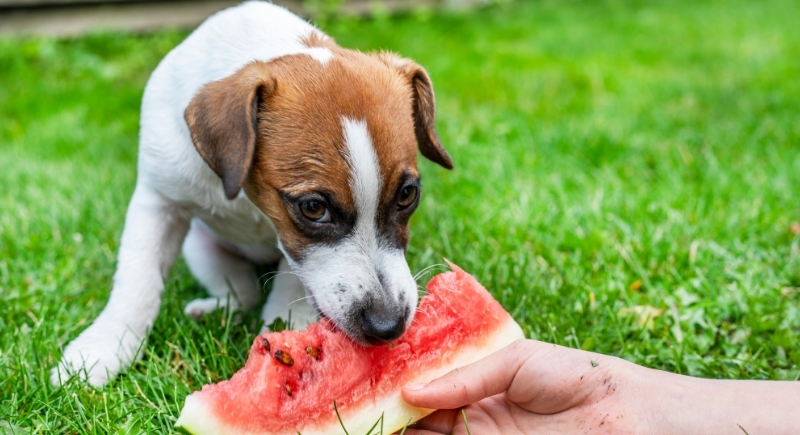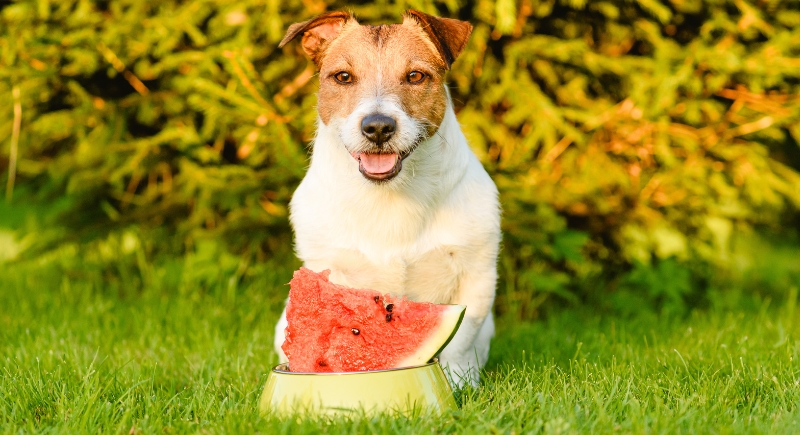Can Dogs Safely Eat Watermelon?
Nothing beats the first slice of a ripe watermelon on a warm day. It’s sweet, juicy, and instantly grabs your dog’s attention with that irresistible scent. Sharing a bite feels harmless, but it’s worth pausing before you do. Watermelon can be a healthy treat under the right conditions, but it’s not always as simple as it looks. Knowing when and how to serve it makes all the difference.
A Treat With a Catch

Image via Canva/Natasha Makarovska
Watermelon isn’t the villain of the fruit bowl; it’s actually one of the safer fruits for dogs when handled correctly. It’s packed with vitamins A, B6, and C, as well as potassium, which makes it refreshing and low-calorie. Because watermelon is about 92 percent water, it’s a great way to keep your dog hydrated on hot days. The important part, though, is how it’s prepared and served. Seeds and rind are a big no-go. The seeds can cause intestinal blockage, and the rind can lead to choking or digestive distress. Stick to the soft red (or yellow) part, and cut it into small, bite-sized cubes.
Even the healthiest snack can cause problems in excess. Watermelon has natural sugars, and too much can upset your dog’s stomach or add unnecessary calories. Treats, watermelon included, should make up no more than 10 percent of your dog’s daily diet. Think of it as a snack, not a side dish. For small breeds like Chihuahuas or Yorkies, two tiny chunks are plenty. Bigger dogs like Labradors can have a few more, but moderation keeps everyone happy and healthy.
How to Serve It
Presentation matters, even for dogs. Start by washing the fruit, removing the rind and all visible seeds, and cutting the pieces to fit your dog’s size. You can serve the chunks fresh, mash them into their food, or freeze small cubes as a cooling treat for summer. Some owners even make watermelon “pup-sicles” by blending it with dog-safe yogurt and freezing the mix. It’s a smarter and much safer alternative to ice cream after playtime.
However, watermelon isn’t for every pup. Dogs with diabetes or sugar sensitivities should avoid it because of the natural sugar content. Those prone to gastrointestinal issues might also react poorly if they eat too much at once. Signs to watch for include vomiting, diarrhea, or bloating. If your dog accidentally swallows seeds or if the rind seems uncomfortable afterward, a quick call to the vet is the safest move.
The Sweet Truth

Image via iStockphoto/alexei_tm
When served safely, watermelon is a fun, hydrating snack that dogs adore. It’s a lovely way to treat them during hot weather, as long as you keep portions small and preparation simple. Think of it as a fruity bonus, not a replacement for their regular meals. Your dog may not care about the vitamins, but that tail wag after a cool, crunchy bite says it all.